The spring-summer selling season of 2006 marked the peak of the housing bubble. Fannie Mae just lowered its projections and signaled the bust will drag on.


Irvine Home Address … 10 FIGARO Irvine, CA 92606
Resale Home Price …… $825,000

Grandmas sit in chairs and reminisce
Boys keep chasing girls to get a kiss
The cars keep going faster all the time
Bums still cry “hey buddy, have you got a dime”
The beat goes on, the beat goes on
Drums keep pounding a rhythm to the brain
Sonny & Cher — The Beat Goes On
Despite the minor bear rallies, the housing crash continues. The beat does on. Prices peaked about 5 years ago with some markets peaking earlier and some later. With problems of shadow inventory looming over the markets, the bottom is not in place, and recovery is a distant fantasy.
Not a happy anniversary: Real estate bust turns 5
By SHANNON BEHNKEN — The Tampa Tribune Published: June 24, 2011
Published: June 24, 2011
TAMPA — It's an inauspicious anniversary. Five long years ago this month, the Tampa Bay area's supercharged housing prices finally ran out of steam, and the housing bust officially began.
Prices have been free-falling ever since.
The dips have slowed, even reversed at times, but every month new data shows median home prices are far below what they were the previous year. Sales, too, have struggled to regain forward momentum.
We've become painfully aware of the drumbeat of dour housing market reports. And yet, the question we all keep coming back to is this: How far will prices fall and how long will it take for them to bounce back?
If the history of deflating bubbles holds true, the bottom will be lower and later than anyone expects, and the time to bounce back will take much longer. How many people are holding out for 5,200 on the NASDAQ?
Area prices have already plummeted 46 percent. More than any time since World War II. More even than during the Great Depression, when the national average home price tumbled 31 percent.
Back then, it took 19 years for prices to recover. And get this: even though our economy hasn't been hit nearly as severely as in the 1930s, it will likely take the same amount of time for Tampa metro prices to recover from the latest downturn.
Not all economists think the turnaround will take decades, but Moody's Economy.com predicts it will be 2025 before median sales prices in the Tampa-St. Petersburg-Clearwater metro recover to the June 2006 median of $239,600. Compare that to the current median of $120,200 and consider that Moody's also expects local prices to fall 7 percent more before they begin to rise sustainably.
“It will be a long time because prices have fallen so much,” said Chris LaFakis, a Moody's economist who covers Tampa Bay.
The asymmetric nature of losses is a real problem. If prices fall 50%, it takes a 100% increase in price to regain the peak. Also, since historic appreciation rates include an unsustainable bubble, people who are anticipating 6% appreciation once prices bottom will be disappointed when 3% appreciation is the norm. Typically it takes 16 years for prices to double. In those markets where prices have dropped more than 50%, it will take 25 years or more to reach the bubble peaks.
Still, the area is in better shape than others. Florida as a whole could see prices fall 10.7 percent further, much more than the national average of 4.2 percent. And prices in Detroit, which has been hit much harder than Florida, won't likely hit its peak price again until 2035.
If you think that's gloomy, just listen to Stan Gerberer, an economist with Orlando-based Fishkind & Associates Inc. He said homeowners need to quit asking when prices will return to peak levels.
“The value was never there in the first place,” he said. “It's not reasonable to think prices will ever get back to those bubble prices.”
There is a truthful statement that won't help those in denial. Prices from the bubble were not real. We are not recovering. At best we will resume a normal rate of appreciation after prices have reached a fundamental value based on rental cashflows.
Consider this example Gerberer gave. If a home was worth $150,000 in 1995 and rose to $400,000 during the boom years, it's likely worth only around $250,000 now, he said.
“It's hard to imagine a scenario where the true value of that house would ever reach $400,000 again,” he said.
Prices will hit $400,000 again eventually, the current owner's grandchildren will consider that price reasonable..jpg)
That's bad news for homeowners who purchased during the boom years. Foreclosures are still ticking up in some areas and economists expect it to take years to work off the inventory.
But Mark Dotzour, chief economist with the real estate center at Texas A&M, doesn't like to compare today's housing slump with the Great Depression. It shouldn't take as long for the overall economy to recover as it did 70 years ago because unemployment isn't nearly as high, he said.
Unemployment was as high as 25 percent back then and is now hovering around 9.1 percent. Tampa Bay's unemployment rate is 10.5 percent.
“The magnitude of the situation isn't even comparable,” Dotzour said. “But the housing market is certainly in distress because of the massive job loss we have had.”
His assessment is partially true. Unemployment is not as bad as the Great Depression, but it is far worse than government statistic show. Since the Great Depression the government has revised its methodology to underreport unemployment. They no longer count discouraged workers, nor do they classify the underemployed as a problem. 
However, Dotzour is more optimistic than Moody's.
“I think people are way oversold on the notion that housing isn't coming back,” he said. “Americans get carried away. We think whatever has happened in the past 24 month will go on forever.”
The real estate market's problems are largely attributable to the way the government has handled the downturn, Dotzour said. He points to bailouts and the home buyer's tax credit, which he says just prolonged the recovery.
“It can't possibly take 19 years for prices to recover,” he said. “I have faith that our government will figure it out before then.”
Being an Aggie, I want to support Mr. Dotzour; however, those comments are pure nonsense. Based on the bear rally of the last 24 months, Americans sustained denial of the problem and are likely more optimistic than they should be. Further, it can easily take 19 years or longer for prices to reach the peak because it was the peak of a housing bubble, not some appropriate price level from which we have temporarily declined. And worst of all, anyone who has faith that our government will figure it out should simply hide his head in shame. 
As painful as it is for people to lose home, Dotzour said the market won't improve until foreclosure homes are resold.
“All these people who lost their homes will have to rent somewhere,” he said. “There's nothing wrong with that. That's the way America has always worked.”
I agree with those statements. Foreclosures are essential to the economic recovery. Renters move in and out of properties with changes in their income and employment status, and nobody gets worked up about it. Why are loan owners any different?
Fannie Mae Revises Down Growth,Home Prices,30Y Rate Outlook
By Yali N'Diaye — Monday, June 20, 2011
WASHINGTON (MNI) – Fannie Mae Monday revised down its estimates for both home prices and growth in the United States this year, noting that the key to the housing recovery remains the labor market.
“Weakness in economic activities spanning manufacturing, consumer spending, jobs, and housing has resulted in the group downgrading projected growth for the current quarter, as well as for the second half of they year,” Fannie Mae's Economics & Mortgage Market Analysis Group said in its June Economic Outlook.
Without job creation, there will be no new household formation. The unemployed don't buy houses.
The mortgage giant also revised down it projections for the 30-year fixed mortgage rate, which it now expects to remain below 5% through the second half of 2012.
The housing forecasts show the 30-year mortgage at 4.8% at the end of this year, compared with the May estimate of 5.2%. In fact, Fannie Mae said it is likely to remain under 5% until the second quarter of 2012, when it is projected to reach 5.0%.
Interest rates will eventually go back up, but it won't happen until the economy improves and lenders write off more of their bad debts. Low interest rates may be with us for a while.
“Prospects for accelerating growth have grown dimmer recently due to downward revisions of first-quarter economic activity and slowdowns across a broad set of indicators during May,” Fannie Mae said. As a result, it now forecasts 2.5% GDP growth this year, compared with a projection of 2.9% last month.
The 2.5% growth estimate is “more than a full percentage point lower than the forecast at the beginning of the year,” the report said.
Going forward, “Ultimately, the labor market holds the key to a housing recovery, but job growth is needed in order to activate housing demand,” said Fannie Mae's Chief Economist Doug Duncan. “Hiring delays will continue to push out timing for the housing rebound.”
Fannie Mae now sees the unemployment rate at 8.8% at the end of 2011, up from it's 8.5% estimate in May. The improvement in the jobs situation through the end of 2012 is also expected to be slower, with the unemployment rate now expected to be 8.6% at the end of 2012, compared with 8.0% in May.
Against this backdrop, home prices are not only expected to decline more than had been anticipated in May, but next year's rebound — while still expected to happen — is projected to be weaker.
The FHFA index is seen down 3.3% in 2011, compared with a 2.0% decline initially expected in May. In 2012, prices are seen recovering by 1.8%, compared with a 2.5% estimate in May.
The economy is not improving, partly because the homebuilding industry, which is usually a strong economic force in a recovery, is not growing. Until the plethora of the unemployed in real estate related industries go back to work, the economy is going to suffer.
Housing slump to last 3 or 4 more years
June 29th, 2011 — posted by Jeff Collins
The housing slump has been going on for nearly six years.
But it’s going to take another three or four years before the backlog of foreclosures that’s dragging the market down can be cleared, an Irvine housing consultant told Orange County business leaders Wednesday.
The housing market took a couple years to muddle back to normal after hitting bottom in 1995, consultant John Burns told the Orange County Forum’s luncheon on housing’s outlook. This time around, “the muddling will be a couple years more (than in the 1990′s) because the problems are more severe.”
John Burns is right. We have not dealt with the excesses of the housing bubble, and until we do, the housing crash will grind on.
Burns was one of three speakers at the forum. But the other speakers, both homebuilders, weren’t much more optimistic.
“We were really hopeful a year ago. … Today, it’s much more sobering for us,” said Standard Pacific Homes President Scott Stowell. “We’re still somewhat bearish.”
Emile Haddad, CEO of developer FivePoint Communities, said that a backlog of vacant homes in Orange County needs to be cleared up before homebuying demand can get back to normal.
May I take this opportunity to say “I told you so?” In my dealings with colleagues in the homebuilding industry (I've never met Stowell or Haddad), I have been consistently telling people what the two above are finally acknowledging. Nobody wants to hear from Cassandra.
That said, the speakers believe that Orange County is a bright spot in the housing market and will revive more quickly than other, harder-hit areas.
Highlights of their comments include:
Burns: “If you look around the country, nationally, there’s 3.1 million more vacant home than there are supposed to be. The good news is there’s only 19,000 of those in Orange County, and we’ll have all those cleared out sometime next year. Orange County and San Antonio will be the first two markets to clear up all of their vacant housing in the entire country.”
Haddad: Five Point Communities, which is managing housing and commercial development surrounding the Orange County Great Park at the former El Toro marine base, said his firm is on track to start building homes by 2013.
“That’s our story for the Great Park,” he said. “It’s a good story.”
Stowell: There’s a huge difference in sales in Standard Pacific projects in north and south Orange County. The company is selling five to eight homes a month in its two Blackstone projects in Brea, but in the Talega project in San Clemente, “We struggle to sell houses.” One reason, he said, is builder competition is stiff in in South County, but hardly exists in north Orange County.
Haddad: Immigrant and Generation Y buyers make up a significant amount of housing demand going forward. Both are looking for a more ubran lifestyle and want to reconnect to the larger community.
Two of the three above want to sell product in Orange County, so their comments should be taken with some skepticism. Further, despite having less vacant housing stock, Orange County has more unresolved mortgages in shadow inventory. In the beaten down markets, many more bad loans have been processed, and pricing is much closer to the bottom than to the top. There is little reason to believe OCs mortgage woes will be resolved quickly.
Fannie Mae and Freddie Mac: All three speakers expressed concerns about congressional proposals to eliminate the mortgage giants created to spur homebuying. Burns noted that the two entities are responsible for the bulk of liquidity in today’s housing market.
Added Haddad: “If the government makes the mistake and gets out of subsidizing housing, you could collapse the housing market.”
We can only hope so. The government will not exit the housing market all at once, but they will exit the over $471,000 market sooner rather than later. Building and selling at price points requiring jumbo financing is going to be a persistent drag on Orange County house prices making the bottom elusive and the recovery tepid.
2.5% annual appreciation since 2000

Today's featured property is a closed sale that was part of shadow inventory. The former owners put 20% down, and during the housing bubble, they didn't raid the housing ATM. Unfortunately, on 1/12/2007 they thought it was a good idea to take out a $880,000 Option ARM and a $109,995 HELOC. That $500,000 in mortgage equity withdrawal cost them their house.
Foreclosure Record
Recording Date: 05/10/2010
Document Type: Notice of Sale
Foreclosure Record
Recording Date: 02/08/2010
Document Type: Notice of Default
Perhaps they didn't care. They got more out of the property by refinancing near the peak rather than selling four years later.
—————————————————————————————————————————————-
Blog Note: I have reorganized the presentation of property information to make a clearer distinction between MLS derived information and that which is proprietary to Irvine Housing Blog. Any comments or suggestions are appreciated.
—————————————————————————————————————————————-
MLS information


Irvine House Address … 10 FIGARO Irvine, CA 92606
Resale House Price …… $825,000 .png)
Property Details for 10 FIGARO Irvine, CA 92606
——————————————————————————
Beds: 4
Baths: 3
Sq. Ft.: 2750
$300/SF
Property Type: Residential, Single Family
Style: Two Level
Year Built: 1996
Community: 0
County: Orange
MLS#: F11043464
Source: CRISNet
Status: Closed
——————————————————————————
APPROVED SHORT SALE!!!! Wonderful home in wonderful West Park Neighborhood. This elegant Vintage Plan home has a great layout with huge windows that give true illumination to this house. It further offers high ceilings, hardwood floors, plantation shutters, a gorgeous spiral staircase, one bed and bath on main level, separate family room with fireplace, large kitchen with island, a private back yard with cabana and built in BBQ. Separate laundry room with sink and storage, a good size loft/den that's perfect for a home office or play room. The bathrooms are very clean and well maintained that have tile flooring and double vanities. A huge master bedroom with stand up shower and tub. The community offer tennis courts, large playground, and gorgeous pool and spa.
——————————————————————————————————————————————-
This property is no longer for sale.
Please contact Shevy Akason, #01836707
949.769.1599
sales@idealhomebrokers.com
——————————————————————————————————————————————-
Public record and proprietary Irvine Housing Blog analysis ![]()
Resale Home Price …… $825,000
House Purchase Price … $625,000
House Purchase Date …. 9/12/2000
Net Gain (Loss) ………. $150,500
Percent Change ………. 24.1%
Annual Appreciation … 2.5%
Cost of Home Ownership
————————————————-
$825,000 ………. Asking Price
$165,000 ………. 20% Down Conventional
4.49% …………… Mortgage Interest Rate
$660,000 ………. 30-Year Mortgage
$143,152 ………. Income Requirement
$3,340 ………. Monthly Mortgage Payment
$715 ………. Property Tax (@1.04%)
$0 ………. Special Taxes and Levies (Mello Roos)
$172 ………. Homeowners Insurance (@ 0.25%)
$0 ………. Private Mortgage Insurance
$40 ………. Homeowners Association Fees
============================================
$4,267 ………. Monthly Cash Outlays
-$796 ………. Tax Savings (% of Interest and Property Tax)
-$871 ………. Equity Hidden in Payment (Amortization)
$274 ………. Lost Income to Down Payment (net of taxes)
$123 ………. Maintenance and Replacement Reserves
============================================
$2,997 ………. Monthly Cost of Ownership
Cash Acquisition Demands
——————————————————————————
$8,250 ………. Furnishing and Move In @1%
$8,250 ………. Closing Costs @1%
$6,600 ………… Interest Points @1% of Loan
$165,000 ………. Down Payment
============================================
$188,100 ………. Total Cash Costs
$45,900 ………… Emergency Cash Reserves
============================================
$234,000 ………. Total Savings Needed
————————————————————————————————————————————-
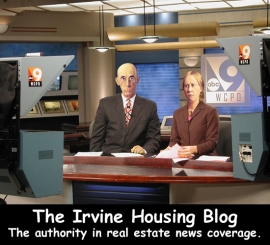
Have a great weekend,
Irvine Renter















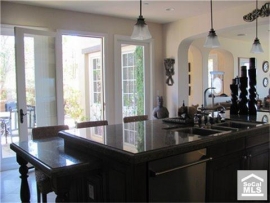












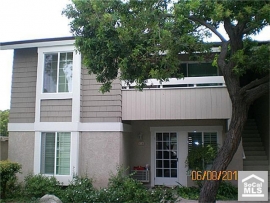
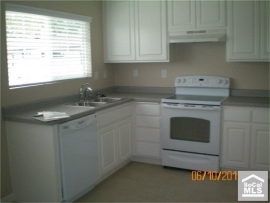








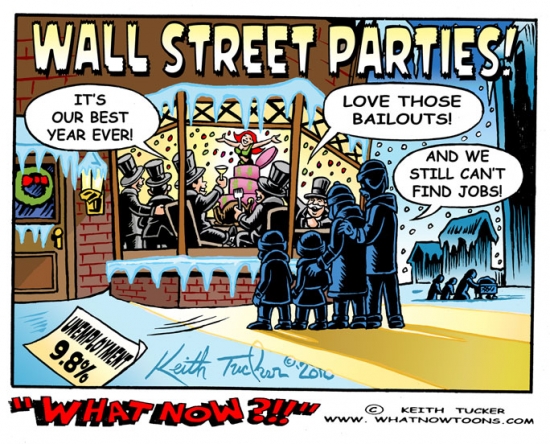


.jpg)







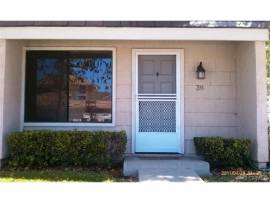
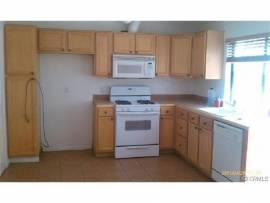













.jpg)
